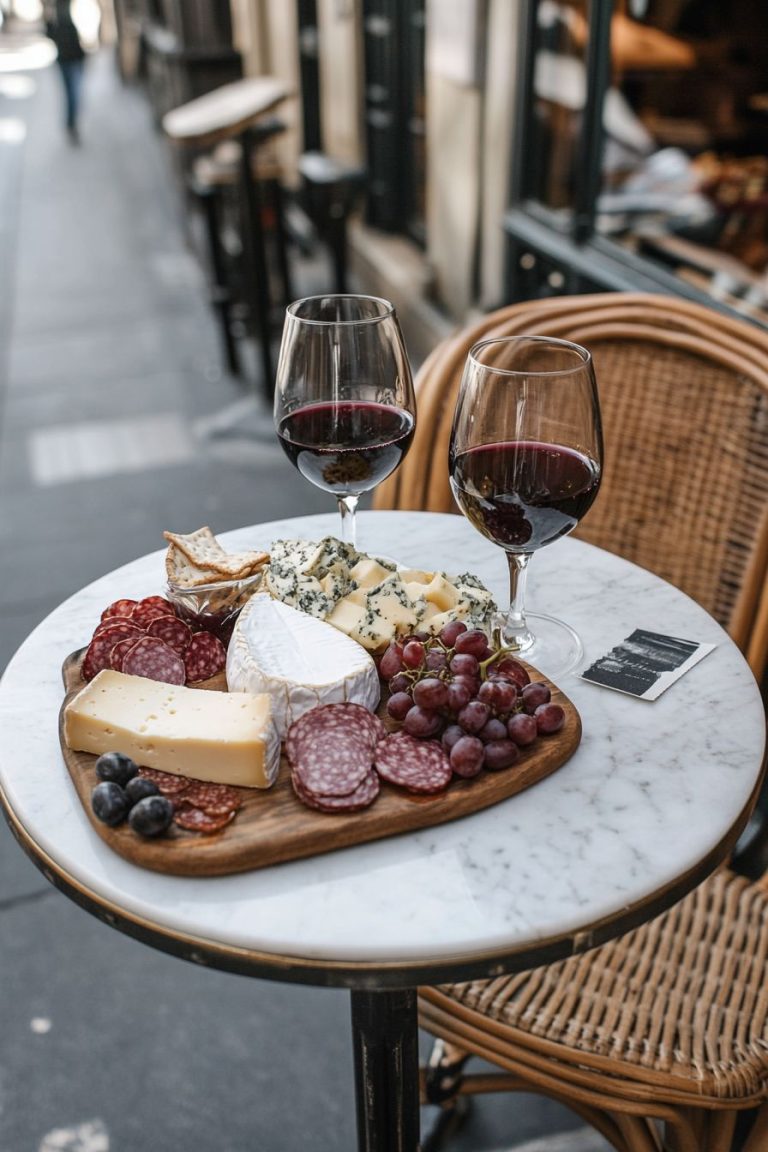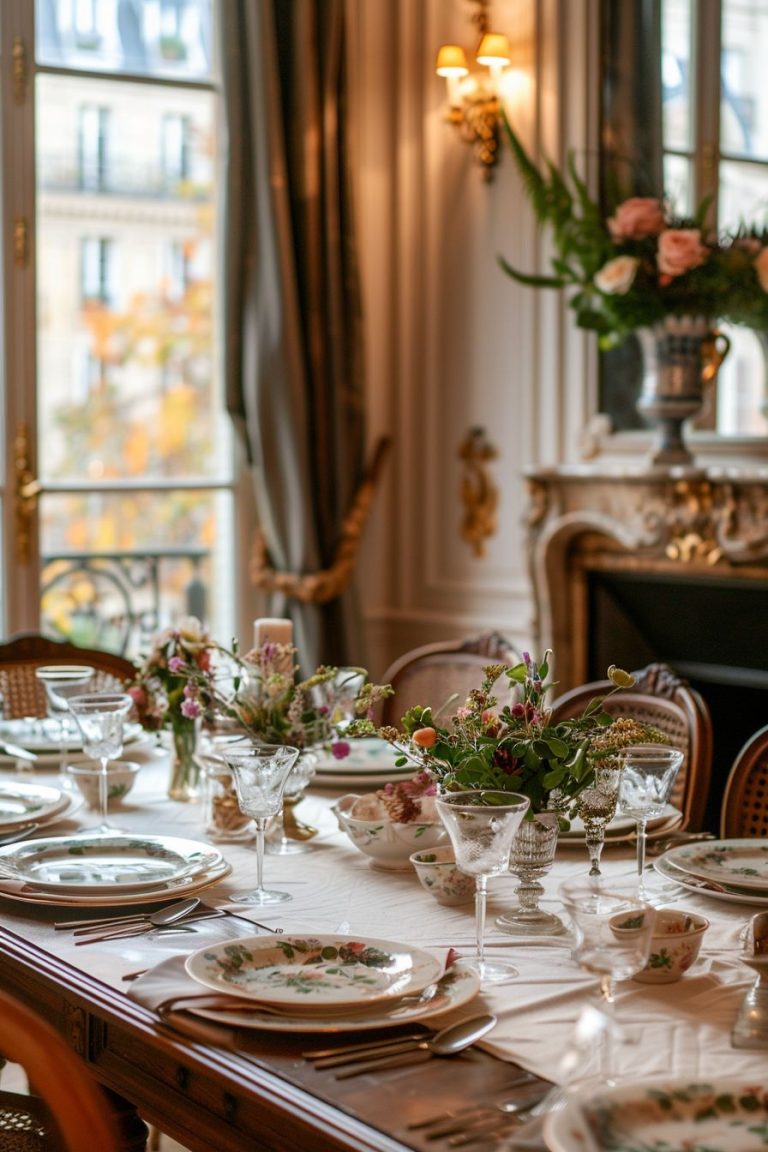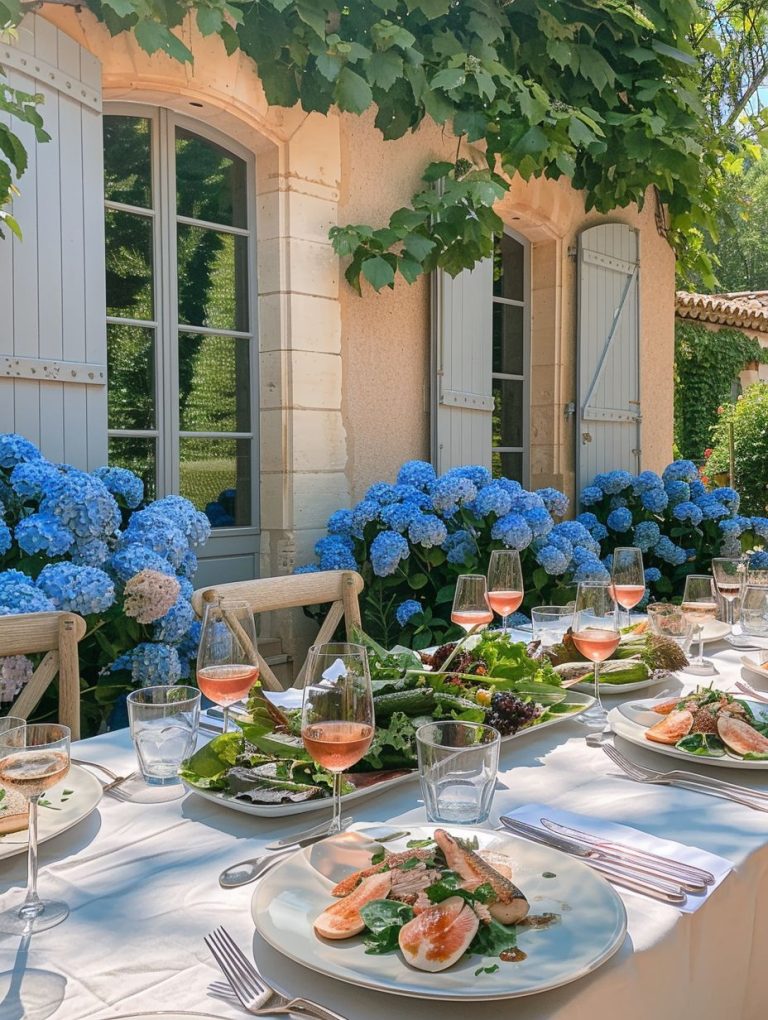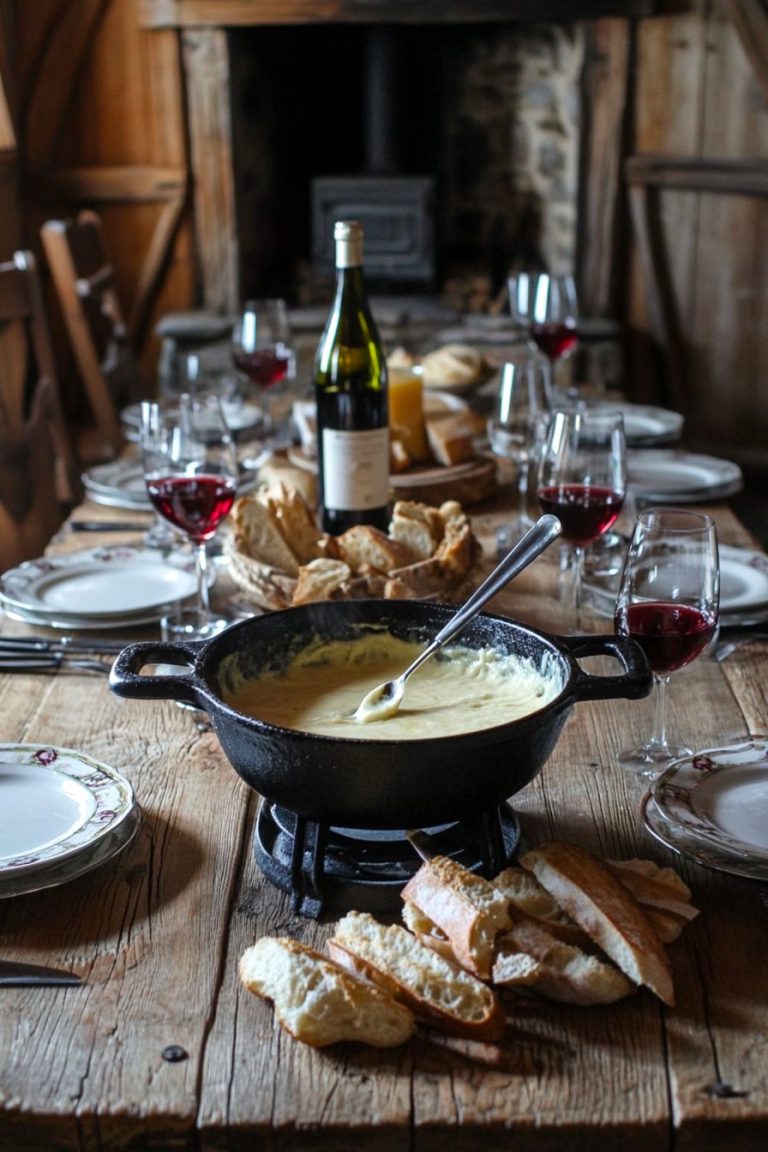French Cuisine: Master the Art of Prepared Food in France
We may earn a commission through all links on this website. As an Amazon Associate, we earn from qualifying purchases.Ever wondered what it takes to whip up a dinner so divine, it transports you straight to the cobblestone streets of Paris or the lavender fields of Provence? Well, dear foodies, it’s time to tighten your aprons and take a look at the universe of French cuisine—where elegance and flavor dance in harmony with your taste buds. For a sprinkle of French fare in the kitchen, this article is your golden ticket.
We’re not just talking about throwing some cheese on a baguette and calling it gourmet; we’re diving into the artistry of French cooking, from the finesse of filleting to the meticulous mastery of sauces.
So, what does French cuisine entail? Picture an evening where each course ruminates, ingredients sing, and your dinner table becomes a stage for French culinary excellence. C’est parti for this gastronomic adventure!
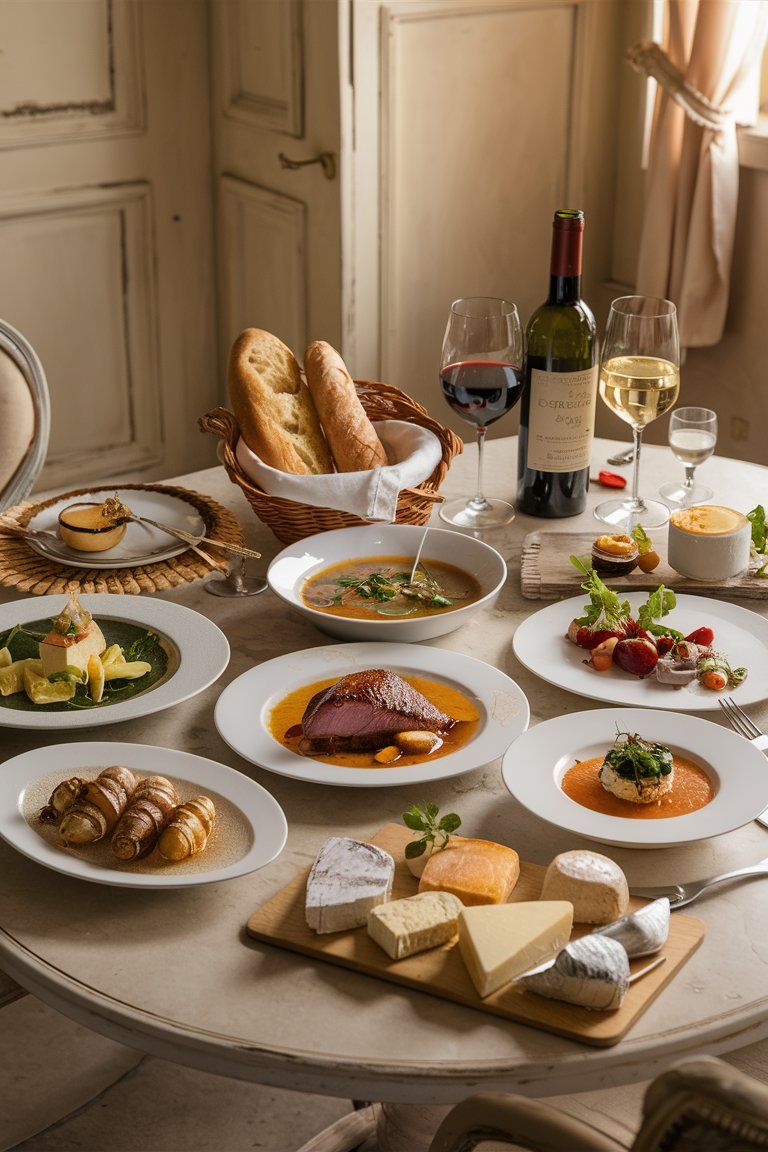
The Art of French Cuisine
French cuisine and recipes are not just meals; they are a symphony of flavors, a ballet of techniques, and a canvas for creativity. As we explore the elegance of French cuisine, we tailor this experience for the American kitchen, guiding you through:
- French Cooking Techniques: Understand the nuances behind perfect braising, the patience required for delicate poaching, and the quick hand needed for masterful sautéing.
- Ingredients That Satisfy: Learn how to select the freshest produce and the finest herbs to elevate your dishes from mundane to magnifique.
- Cultural Significance: Discover the stories behind iconic dishes like Coq au Vin and Bouillabaisse, and how they’ve come to define French culinary heritage.
- Simplifying Sophistication: Find out how to infuse your American kitchen with French chic without needing a plane ticket or a translator.
- The Art of Presentation: Embrace the importance of garnishes and the art of plating that make each dish a visual feast.
Are you ready to transform your dinner routine into a French culinary escapade that will impress even the most discerning of palates? Let’s warm that oven and set forth on a delicious journey through the heart of France, right from the comfort of your own home.
Fundamentals of French Cuisine
In the heart of every French kitchen lies a commitment to the fundamentals that give French cuisine its enviable reputation. Let’s unwrap these layers of tradition and innovation to uncover what makes French recipes the gold standard in the culinary world.
The Pinnacle of Ingredients
The French have a saying, “You cannot make a good wine with bad grapes,” and this philosophy extends to all their ingredients. Freshness is paramount, as is the quality. The culinary concept of ‘terroir’—the belief that the environment in which produce grows imparts unique flavor characteristics—is sacred. This connection to the land adds not only a dimension of flavor but also a sense of place and tradition to every dish.
Sourcing authentic French ingredients isn’t as daunting as it sounds. Visit your local specialty food store for high-quality imported goods. Farmer’s markets can be goldmines for fresh, organic produce akin to what you’d find in a French marché. Don’t forget online retailers, where you can find everything from French sea salt to the finest espelette pepper.
Food Simplicity and Balance
French cooking doesn’t rely on extravagance. Instead, it’s a delicate balance of flavors and a simplicity that allows each ingredient to sing. It is not about an overbearing orchestra of spices or seasonings but about harmonious melodies that enhance the natural beauty of the food.
Precision in Preparation
The concept of mise en place, or ‘everything in its place’, is a way of life for French chefs. This level of organization ensures that the cooking process is smooth and efficient, vital for dishes that require precise timing.
Culinary Artistry
Even the way ingredients are cut, like the julienne technique, which creates matchstick-sized pieces, plays a role in the texture and presentation of a dish. It’s this attention to detail that elevates a meal to an art form.
Saucy Foundations
If French cuisine had a backbone, it would be its sauces. The five ‘mother sauces’—Béchamel, Velouté, Espagnole, Sauce Tomat, and Hollandaise—are the quintessential bases on which a myriad of dishes thrive. Master these and you’ve got the secret sauce to French culinary wizardry.
Technique Is King
The French kitchen is a ballet of techniques. Braising transforms the toughest cuts into tender morsels; poaching gently coaxes flavors from the most delicate of proteins; and sautéing adds just the right amount of sear and succulence. These methods aren’t just cooking steps; they are transformative processes that are central to French cooking.
By respecting these fundamental principles, you invite not just the flavors but the very soul of French cuisine into your kitchen. It’s an adventure of the palate where every bite tells a story. Take these foundations and build your French cooking repertoire—one sauce, one technique, one perfectly julienned vegetable at a time.
Appetizers to Start Your French Meal Experience
Imagine you’re sitting in a quaint Parisian bistro; the first course arrives, and it’s not just food—it’s an introduction to French culture on a plate. Let’s kick off this culinary escapade with some classic French appetizers that’ll have your dinner guests saying “ooh la la” as they reach for their wine glasses.
Escargots à la Bourguignonne is the most famous French starter. Snails bathed in a lush garlic-parsley butter, this dish is as much about the rustic French countryside as it is about the elegance of its cuisine. Each snail carries the earthy tones of the regions where they’re harvested, making them a true taste of France’s natural terroir.
Pâté de Campagne is a country-style pâté brings the flavors of rural France to your table. It’s a mosaic of textures and flavors, blending pork, liver, and often a splash of cognac or brandy. Each region adds its twist—herbs from Provence, perhaps, or apples from Normandy.
Soupe à l’Oignon is a wintertime classic starter. This beloved onion soup is a testament to the French knack for turning simple ingredients into something spectacular. With its rich beef stock and caramelized onions, topped with a crispy cheese crouton, it encapsulates the warmth of French hospitality.
When it comes to wine pairings, these appetizers are as selective as a Parisian choosing a scarf for the day:
- Escargots à la Bourguignonne pairs delightfully with a crisp Chablis, whose acidity cuts through the buttery richness.
- Pâté de Campagne calls for something with body, perhaps a fruity Beaujolais or a robust Bordeaux to stand up to its hearty texture.
- Soupe à l’Oignon deserves a wine with enough character to complement its savory depth, like a Côtes du Rhône.
Finally, let your creative spirit run wild with these appetizers. For Escargots à la Bourguignonne, add a touch of Roquefort to the butter for a tangy twist. Transform the Pâté de Campagne by incorporating tart green peppercorns or a handful of pistachios for crunch. With Soupe à l’Oignon, try different types of onions or add a splash of sherry for an extra layer of complexity.
These appetizers are more than just a prelude; they’re an invitation to explore and savor the subtleties of French cuisine. With each bite and sip, you’re not just dining; you’re traversing the French countryside. Bon appétit!
French Main Courses for an Elegant Dinner
After a delightful start with appetizers, we embark on the heart of our French culinary voyage: the main courses. These dishes are stories told on a plate, rich with history and brimming with French tradition. Let’s unravel the tapestry of flavors with classics like Coq au Vin, Bouillabaisse, and Duck Confit.
Coq au Vin is a symphony of chicken, wine, mushrooms, and bacon, playing a melody that dates back to ancient Gauls and Romans. It’s said that Julius Caesar himself was served a version of this dish after his conquest of Gaul. The secret lies in the slow simmering, which tenderizes the chicken and melds the flavors of the wine and aromatics into a sauce that’s pure alchemy.
Bouillabaisse lets you sail to the sun-drenched shores of Marseille with this Provençal seafood stew. Originally a humble meal for fishermen using the day’s unsold catch, Bouillabaisse has evolved into a luxurious blend of fish, shellfish, and saffron. The key is the layering of flavors, starting with a base of onions, tomatoes, and garlic, followed by a medley of the freshest fish, each contributing its unique note to the chorus.
The esteemed Duck Confit is steeped in practicality turned gourmet, Duck Confit comes from the need to preserve meat in times before refrigeration. Duck legs are salt-cured and then poached in their fat, resulting in meat that is fall-off-the-bone tender with a rich, velvety texture.
You can bring these masterpieces into the American kitchen without losing an ounce of their French soul. Employ a trusty Dutch oven for Coq au Vin to achieve that gentle, even heat required for coaxing out the complex layers of flavor.
For Bouillabaisse, don’t fret if you can’t find rascasse; substitute with the freshest local fish you can procure, and always use a high-quality saffron for that signature golden hue. Duck Confit may sound daunting, but with patience and a good source for duck legs and fat, it’s a weekend project that pays off in spades.
Plating
Presentation and garnishes are not mere afterthoughts; they are silent narrators of the dish’s story:
Present Coq au Vin in the cooking vessel itself for rustic charm, garnished with a sprinkle of fresh parsley for a burst of color. Serve Bouillabaisse with a side of rouille, a garlicky saffron mayonnaise, spread on crusty slices of baguette. Plate Duck Confit atop a bed of lentils or alongside roasted potatoes, and finish with a sprig of thyme to honor the simplicity and depth of the dish.
French Baking Perfection
Imagine strolling through a quaint Parisian street, greeted by the warm, buttery scent of fresh pastries wafting through the air. This is the heart of French baking—a craft revered as much as any of the country’s artistic achievements.
French Breads
In France, bread isn’t just a side dish; it’s a cultural staple, an art form, and a daily ritual, with the Baguette and Brioche reigning supreme.
The Baguette is the queen of French bread, characterized by its crispy crust and tender inside. The trick to achieving that perfect texture? A steamy oven that mimics the professional bakers’ environment. For the iconic slashes on top, a swift, confident hand with a sharp blade is essential, ensuring the bread expands beautifully as it bakes.
Brioche, with its golden crown and rich, tender crumb, is a luxurious take on bread that doubles as a treat. The secret behind its indulgent texture is a generous amount of eggs and butter, demanding a robust kneading technique to develop the gluten and incorporate the fat evenly.
French Pastry Making
When it comes to French pastries, precision and patience are your best pals. Take the Croissant and Tarte Tatin; both are pinnacles of French pastry arts but require a different set of skills and dedication.
Croissants stem from the sweet bread category of viennoiserie. Crafting the perfect croissant is a French art like no other. It starts with a détrempe (the initial dough) and the beurrage (the butter block). The process of laminating, where you fold and roll the dough to create paper-thin layers, is where the magic happens. Temperature control is crucial; too warm and the butter runs, too cold and the dough cracks.
Tarte Tatin is an upside-down pastry, with caramelized apples set atop a buttery crust, and is a delicious accident turned a classic. Achieving the perfect caramel, neither too pale nor burnt, requires a watchful eye and a sense of timing. Then, the crust—pâte brisée or puff pastry—must be thick enough to hold the fruit but thin enough to crisp up in the oven.
For those on this side of the Atlantic looking to recreate these masterpieces, practice makes perfect. Your first croissant might not be Parisian bakery-worthy, but each attempt brings you closer to perfection.
Remember, French baking isn’t just about following a recipe—it’s about the experience, the senses, and the love that goes into each fold, knead, and turn.
Cheese: The Quintessential French Course
Ah, the world of French cheeses, where each bite recalls regional heritage, artisanal craftsmanship, and gastronomic delight. As a finale to the flavors that is a French dinner, the cheese course stands out as an act of pure indulgence. In France, this isn’t just a course; it’s a ritual, a cultural embrace, and let’s be honest, a delicious excuse to extend the evening!
Now, let’s demystify the plethora of French fromages for the uninitiated American gourmand:
Soft Cheeses, like Brie and Camembert, are the creamy dreamboats of the cheese world. Their rinds, a white bloom of edible mold, encase a gooey, often buttery center that simply melts in your mouth.
Semi-Soft Cheeses, such as Morbier and Munster, offer a supple yet springy texture. They offer a balance of creaminess without the runniness, boasting bold flavors that range from mildly fruity to downright pungent.
Hard Cheeses, the likes of Comté and Beaufort, are the stalwarts here. Aged to perfection, these cheeses have a firm texture and a complexity of flavor that can include nutty, sweet, and even floral notes.
Blue-Veined Cheeses like Roquefort, the king of blue cheeses, reign supreme with their tangy, salty profile and distinctive veins of blue mold that impart a strong, spicy kick to your palate.
Now, to curate the ultimate cheese platter, variety is the key. Aim for a mix of textures and tastes on your French cheese board:
- Soft: A dollop of creamy Brillat-Savarin.
- Semi-Soft: A slice of aromatic Tomme de Savoie.
- Hard: A chunk of nutty-aged Gruyère.
- Blue: A wedge of piquant Bleu d’Auvergne.
Accompany these with a selection of nuts like walnuts or almonds, fresh fruits such as grapes or figs, and a drizzle of honey for that perfect harmony of flavors. Don’t forget the baguette, thinly sliced—it’s the faithful companion to every cheese.
As for cheese-tasting etiquette, it’s simple:
- Order Matters: Start with the mildest cheese and work your way to the strongest, so you don’t overwhelm your taste buds too early.
- Portion Control: Take a modest piece of each cheese to ensure everyone gets a taste and to maintain the balance of flavors on your plate.
- Pairing is an Art: A sip of wine between cheeses cleanses the palate. Remember, if it’s grown together, it goes together—regional pairings are a safe bet.
Whether you’re hosting a dinner party or simply indulging in a cozy night in, embracing the art of the French cheese course will elevate any meal. So, slice carefully, pair thoughtfully, and savor each morsel as if you were dining across from the Eiffel Tower itself.
Pairing Wine with French Dishes
Mastering the art of French cuisine means understanding the delicate dance between dish and drink. The French have practically written the rulebook on wine pairings, and the golden rule is a simple one: “What grows together, goes together.” This adage isn’t just a catchy phrase—it’s a time-tested guide to ensuring the flavors of your meal and your wine complement each other like a perfectly choreographed ballet.
Here’s a sip of wisdom on how to pair wine with French dishes:
Appetizers: Starting off with light appetizers like Escargots à la Bourguignonne or a Soupe à l’Oignon? A crisp, minerally Chablis or a zesty Sancerre will elevate these dishes without overpowering them.
Main Courses: For heartier fares such as Coq au Vin or Bouillabaisse, you’ll want something that can stand up to the bold flavors. A robust Burgundy or a structured Côtes du Rhône brings out the richness of these dishes without a hint of competition.
Cheese Course: Reach for a bottle with enough character to mingle with the assorted cheese flavors. A soft Brie sings alongside a glass of fruity Beaujolais, while a slice of sharp Roquefort pairs divinely with a sweet Sauternes.
Desserts: French desserts invite you to play with contrasts. The burnt sugar top of a Crème Brûlée finds its match in a late-harvest Riesling, while the dark seduction of a Mousse au Chocolat calls for the berry notes of a Banyuls.
When selecting wines, consider the regionality of both the vino and the victuals. A dish hailing from Provence may find its soulmate in a bottle from the same sun-drenched vineyards. And remember, the goal is harmony, not domination. The wine should accentuate, not eclipse, the flavor of your French dinner.
Here’s to a night where the wine flows as freely as the conversation, and every sip and bite is a toast to the art of French dining. Santé!
French Desserts to Indulge in After Dinner
After a symphony of savory sensations, the French dining experience crescendos into the sweet finale: dessert. This is where the true artistry of French cuisine unfolds, through the alchemy of pastries and confections. Crème Brûlée, Mousse au Chocolat, and Clafoutis are not mere endings to a meal but gateways into the heart of French patisserie tradition.
Crème Brûlée is a time-honored French dessert every chef must master. The quest for the quintessential Crème Brûlée begins with the perfect custard. Temperature control is key; a gentle bake in a water bath ensures a silky texture that barely quivers under the spoon. The crowning glory, a brittle caramelized sugar top, requires a fearless approach with the blowtorch—just a moment too long, and the magic is lost.
Achieving the airy yet rich quality of Mousse au Chocolat lies in the chocolate itself. Opt for a high-quality variety with a high cocoa content, and consider the fold, not the mix; the secret to its lightness is in preserving the air bubbles introduced during the whisking of egg whites.
Rustic and comforting, the Clafoutis is the less fussy cousin in the French dessert family. Whether studded with black cherries or adorned with other seasonal fruits, the batter should be just dense enough to hold its treasures but light enough to puff up gracefully in the oven.
When it comes to presentation, think of understated elegance. A simple dusting of powdered sugar or a strategically placed mint leaf can elevate your dessert from homemade to haute cuisine. And in the spirit of French portion control, serve these delights in moderation—small ramekins for Crème Brûlée, delicate coupes for Mousse au Chocolat, and slender slices of Clafoutis. It’s about savoring each bite with intention and delight.
French desserts might seem like the domain of professional pastry chefs, but they’re well within the grasp of the home cook who’s armed with patience and passion. Invite these classic French desserts into your kitchen and discover that the sweetest rewards often follow a little effort.
Setting the Scene: French Dinner Table Etiquette
The final brushstroke in the masterpiece of a French dinner is not the food itself, but the ambiance it’s savored in. French dining etiquette is an art that pays homage to detail, precision, and organization that makes a meal an experience. To dine à la française is to engage in sensory delights, where the table setting plays a leading role.
Tablescapes that Whisper Elegance: Begin with a clean, crisp tablecloth, preferably in a neutral tone, to set the stage. Your cutlery, gleaming and perfectly aligned, should sit as the trusted cast of characters—forks to the left, knives and spoons to the right, their placement hinting at the courses to come. Clear and spotless glassware captures the light, casting a convivial glow across the table.
Linen’s Luxurious Touch: Cloth napkins, folded with care (perhaps in a simple bishop’s hat or a classic pyramid), add understated sophistication. They aren’t just practical; they’re an invitation to guests, signaling the start of a leisurely, indulgent meal.
Pace and Conversation: In French culture, dining is a leisurely affair, with courses unfolding like acts in a play. There’s no rush to the next scene—each bite deserves its moment. Conversation, too, follows this unhurried tempo, with discussions that flow as smoothly as the wine.
Musical Accents: To truly transport your guests, consider a soft soundtrack of French music in the background—perhaps a bit of Édith Piaf or Yann Tiersen—melodies that don’t overpower but complement the meal’s rhythm.
By paying homage to these details, the simple act of dining transcends into a cultivated ritual that pleases not just the palate but the soul. It’s a reminder that in French culture, a meal is not just food on a plate; it’s a narrative of flavor, company, and ambiance. As the evening lingers and the plates are cleared, what remains is the resonant joy of a meal shared and savored, the French way.
Respecting French Cuisine Traditions
Traditional French cuisine involves much more than a mere assembly of ingredients; it’s an immersion into a culture steeped in history and seasoned with artistry. The symphony of flavors found in classic dishes is a testament to a heritage that values both the meticulous process and the shared experience of dining.
A Canvas of Flavors: The hues of Herbes de Provence in a Ratatouille or the rich tones of a Bordeaux reduction in Boeuf Bourguignon are not just ingredients; they are historical annotations on the French palate.
The Convivial Table: French cuisine is synonymous with conviviality—the pleasure of gathering around the table with loved ones. The act of breaking bread, or rather, tearing into a crusty baguette, is a ritual that transcends the meal itself, fostering bonds and igniting conversations.
An Open Invitation: Embrace the art of French cooking in your own home. Let your kitchen become a place where culinary traditions are honored, and new interpretations are welcomed. Whether you’re perfecting your puff pastry or daring to debone a quail, each step is a dance with tradition.
Continual Discovery: The vast landscape of France’s cuisine heritage invites endless learning. From the creamy Camembert of Normandy to the lavender fields that flavor Provençal honey, there’s always a new taste, a different technique, or a regional secret waiting to be discovered.
Bon voyage on your journey of discovery, and may your kitchen always be filled with the joie de vivre that is French dining.

